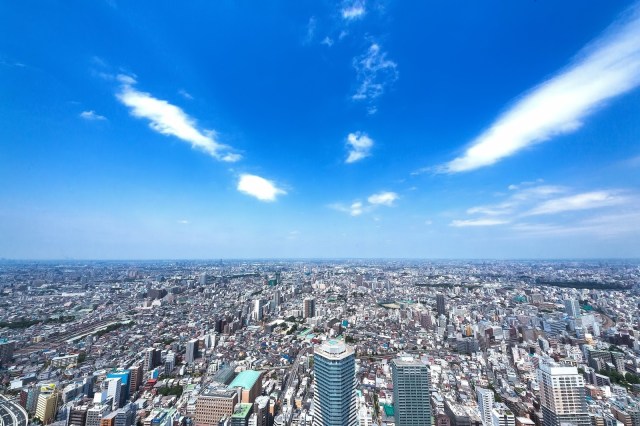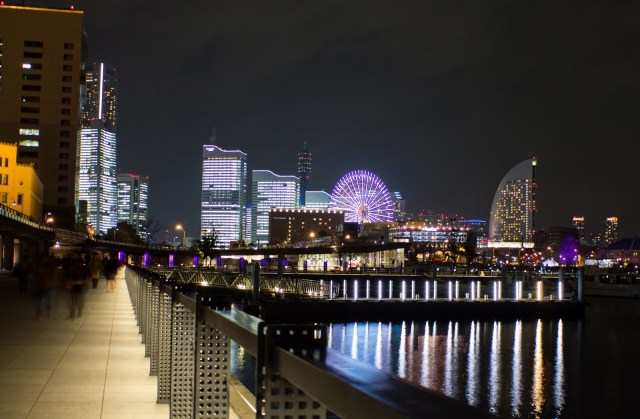
Japan’s population continues to become more international, but the situation might be changing soon.
Though the population of Japan has been in decline for quite some time now, the population of Japan’s capital continues to grow. And it’s not just Tokyo, either, as the city and the three prefectures that border it, Kanagawa, Saitama, and Chiba, saw an increase to their collective number of residents last year.
According to the just-released results of a study by the Ministry of Internal Affairs and Communications, the total population of Tokyo, Kanagawa, Saitama, and Chiba grew to 36,754,193 during 2019, a 0.37-percent increase over the previous year. Out of those new residents, 67,301 were Japanese citizens, but the bigger increase came from the 68,161 foreigners who started calling those parts of Japan their home.
In relative terms, the Japanese population of the “Tokyo metropolitan area” (as the survey described the city and its prefectural neighbors) was up just 0.19 percent, while its foreign population grew 6.23 percent, a rate more than 32 times faster. This marks the first time for the foreign population to increase faster than the Japanese one for the area since the ministry first began separating such demographic data in 2012.
The foreign population increased in Tokyo and all three of the prefectures individually as well. The largest gain was in Yokohama, two cities south of Tokyo, which welcomed 6,501 new foreign residents, likely due to having educational and economic opportunities of its own, as well as being within commutable distance to offices and schools in Tokyo (the recent addition of a life-size Gundam to the Yokohama harbor front probably didn’t hurt the city’s attractiveness either).
▼ Yokohama
Yokohama was followed by Kawasaki, the city sandwiched between Tokyo and Yokohama, with 3,975 new foreign residents, and in third was Kawaguchi in Saitama Prefecture (2,776 people), with both towns providing convenient access to downtown Tokyo but with more affordable costs of living. Within Tokyo itself, the largest increases in foreign residents were in Edogawa and Adachi Wards, both among the less expensive of the city’s 23 central wards.
However, the ministry’s report was based on residency registrations as of January 1, meaning that it reflects the situation from before the start of the coronavirus outbreak in Japan. Between immigration restrictions (as a by-product of international travel restrictions) currently in place and work being harder to come by during the economic downturn, especially in the service sector in which many foreign students work part-time to finance their study-in-Japan endeavors, Tokyo’s foreign population has dipped from 577,000 on January 1 to 559,000 as of July 1, and may continue to decline should more expats leave Japan to seek greater stability and support in their countries of citizenship.
Source: Nihon Keizai Shimbun
Top image: Pakutaso
Insert image: Pakutaso
● Want to hear about SoraNews24’s latest articles as soon as they’re published? Follow us on Facebook and Twitter!
Follow Casey on Twitter, where one of his favorite things about Yokohama is the taiyaki.


 Japan’s foreign population reaches historic milestone following largest-ever single-year surge
Japan’s foreign population reaches historic milestone following largest-ever single-year surge Japan’s Japanese population dropping in every part of the country, foreign population rising
Japan’s Japanese population dropping in every part of the country, foreign population rising Ridesharing services legalized for Tokyo and Kyoto, but does this change anything?
Ridesharing services legalized for Tokyo and Kyoto, but does this change anything? Tokyo experiences drop in population for seventh consecutive month
Tokyo experiences drop in population for seventh consecutive month The price of newly built apartments in central Tokyo skyrocketed over 100 million yen last year
The price of newly built apartments in central Tokyo skyrocketed over 100 million yen last year Japan’s new difficult-to-drink-from beer glass protects your liver, but it’s a brutal experience
Japan’s new difficult-to-drink-from beer glass protects your liver, but it’s a brutal experience Demon Slayer: Kimetsu no Yaiba gets new roller coaster attractions and food at Universal Studios Japan
Demon Slayer: Kimetsu no Yaiba gets new roller coaster attractions and food at Universal Studios Japan How to order snacks on a Shinkansen bullet train in Japan
How to order snacks on a Shinkansen bullet train in Japan Burger King Japan suddenly adds Dr. Pepper and Dr. Pepper floats to its menu nationwide
Burger King Japan suddenly adds Dr. Pepper and Dr. Pepper floats to its menu nationwide New Pokémon ice cream, dessert drinks, and cool merch coming to Baskin-Robbins Japan【Pics】
New Pokémon ice cream, dessert drinks, and cool merch coming to Baskin-Robbins Japan【Pics】 Caffeinated ramen for gamers that you can eat with one hand going on sale in Japan
Caffeinated ramen for gamers that you can eat with one hand going on sale in Japan New samurai glasses are Japan’s latest weird must-have souvenir
New samurai glasses are Japan’s latest weird must-have souvenir McDonald’s adds new watermelon frappe and fruity macaron to its menu in Japan
McDonald’s adds new watermelon frappe and fruity macaron to its menu in Japan Princesses, fruits, and blacksmiths: Study reveals the 30 most unusual family names in Japan
Princesses, fruits, and blacksmiths: Study reveals the 30 most unusual family names in Japan We check out the local flavors of the commonly confused Ome and Aomi areas of Tokyo in one day
We check out the local flavors of the commonly confused Ome and Aomi areas of Tokyo in one day Nintendo history you can feel – Super NES, N64, and GameCube controllers become capsule toys
Nintendo history you can feel – Super NES, N64, and GameCube controllers become capsule toys Hello, cosmetics! Clinique teams up with Hello Kitty this summer for first-time collaboration
Hello, cosmetics! Clinique teams up with Hello Kitty this summer for first-time collaboration “The most Delicious Cup Noodle in history” – Japan’s French Cup Noodle wins our heart【Taste test】
“The most Delicious Cup Noodle in history” – Japan’s French Cup Noodle wins our heart【Taste test】 Starbucks releases a cute Frappuccino and Unicorn Cake…but not in Japan
Starbucks releases a cute Frappuccino and Unicorn Cake…but not in Japan Kyoto Tower mascot termination reveals dark side behind cute Japanese characters
Kyoto Tower mascot termination reveals dark side behind cute Japanese characters McDonald’s Japan’s Soft Twist Tower: A phantom ice cream only sold at select branches
McDonald’s Japan’s Soft Twist Tower: A phantom ice cream only sold at select branches Yabai Ramen: What makes this Japanese ramen so dangerous?
Yabai Ramen: What makes this Japanese ramen so dangerous? Finally! Nintendo Japan expands Switch 8-bit controller sales to everybody, Online member or not
Finally! Nintendo Japan expands Switch 8-bit controller sales to everybody, Online member or not Japanese government wants to build luxury resorts in all national parks for foreign tourists
Japanese government wants to build luxury resorts in all national parks for foreign tourists To combat declining birth rate, Japan to begin offering “Breeding Visas” to foreigners
To combat declining birth rate, Japan to begin offering “Breeding Visas” to foreigners 10 things you should buy at 7-Eleven in Japan
10 things you should buy at 7-Eleven in Japan Studio Ghibli releases anime heroine cosplay dresses that are super comfy to wear
Studio Ghibli releases anime heroine cosplay dresses that are super comfy to wear Woman charged for driving suitcase without a license in Osaka
Woman charged for driving suitcase without a license in Osaka Studio Ghibli unveils My Neighbour Totoro miniature house model
Studio Ghibli unveils My Neighbour Totoro miniature house model Kyoto experiencing problems with foreign tourists not paying for bus fares, but not on purpose
Kyoto experiencing problems with foreign tourists not paying for bus fares, but not on purpose Fighting mild hunger with a Japanese soda that turns into jelly in the stomach【Taste test】
Fighting mild hunger with a Japanese soda that turns into jelly in the stomach【Taste test】 Studio Ghibli’s Howl’s Moving Castle tapestry unveiled in Japan for first time
Studio Ghibli’s Howl’s Moving Castle tapestry unveiled in Japan for first time McDonald’s new Happy Meals offer up cute and practical Sanrio lifestyle goods
McDonald’s new Happy Meals offer up cute and practical Sanrio lifestyle goods Sales of Japan’s most convenient train ticket/shopping payment cards suspended indefinitely
Sales of Japan’s most convenient train ticket/shopping payment cards suspended indefinitely Sold-out Studio Ghibli desktop humidifiers are back so Totoro can help you through the dry season
Sold-out Studio Ghibli desktop humidifiers are back so Totoro can help you through the dry season Japanese government to make first change to romanization spelling rules since the 1950s
Japanese government to make first change to romanization spelling rules since the 1950s Foreigner’s request for help in Tokyo makes us sad for the state of society
Foreigner’s request for help in Tokyo makes us sad for the state of society Ghibli founders Toshio Suzuki and Hayao Miyazaki contribute to Japanese whisky Totoro label design
Ghibli founders Toshio Suzuki and Hayao Miyazaki contribute to Japanese whisky Totoro label design Doraemon found buried at sea as scene from 1993 anime becomes real life【Photos】
Doraemon found buried at sea as scene from 1993 anime becomes real life【Photos】 Tokyo’s most famous Starbucks is closed
Tokyo’s most famous Starbucks is closed Home-hunting in Japan changes as people eye new communities in wake of COVID-19
Home-hunting in Japan changes as people eye new communities in wake of COVID-19 Five of the worst areas to live in and around Tokyo
Five of the worst areas to live in and around Tokyo Japanese university globalizes with fall start date, governor wants English as official language
Japanese university globalizes with fall start date, governor wants English as official language Japanese government wants to build luxury resorts in all national parks for foreign tourists
Japanese government wants to build luxury resorts in all national parks for foreign tourists Japanese breast size study shows rapid growth in previously smallest-busted region of county
Japanese breast size study shows rapid growth in previously smallest-busted region of county Roughly one in eight of Tokyo’s new adults is foreign-born, study shows
Roughly one in eight of Tokyo’s new adults is foreign-born, study shows Japan reports fewer children and more elderly people for 35th year in a row
Japan reports fewer children and more elderly people for 35th year in a row Starbucks close to total Japan domination
Starbucks close to total Japan domination Japan suffers 37th consecutive year of low birthrate, Japanese people may become extinct someday
Japan suffers 37th consecutive year of low birthrate, Japanese people may become extinct someday This is a pretty worrying chart for China’s demographic future
This is a pretty worrying chart for China’s demographic future Japan’s suicide number drops for eighth straight year, rises among teens
Japan’s suicide number drops for eighth straight year, rises among teens Japanese travelers are avoiding Kyoto as the city’s number of foreign visitors continues to grow
Japanese travelers are avoiding Kyoto as the city’s number of foreign visitors continues to grow Japan now has over 40,000 foreign convenience store clerks as it continues to internationalize
Japan now has over 40,000 foreign convenience store clerks as it continues to internationalize Yokohama ranks as most desirable city for living in Kanto for the second year in a row
Yokohama ranks as most desirable city for living in Kanto for the second year in a row Tokyo plan to give 100,000 yen to residents who get infected with coronavirus sparks backlash
Tokyo plan to give 100,000 yen to residents who get infected with coronavirus sparks backlash Japanese town bids for new residents with hilarious fake zombie game trailer 【Video】
Japanese town bids for new residents with hilarious fake zombie game trailer 【Video】
Leave a Reply